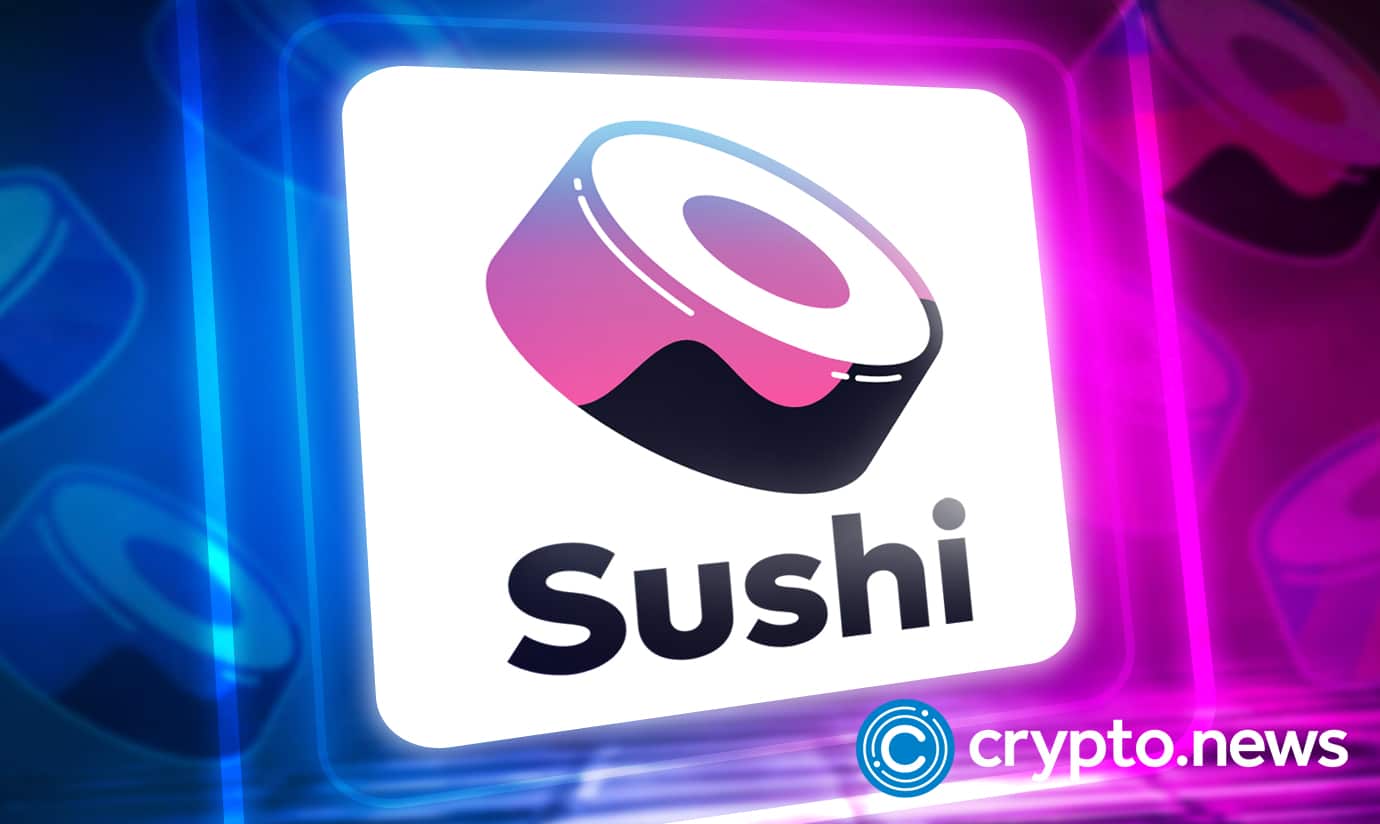Sushiswap Crypto DEX: What Is It, and How Can I Use It?

SushiSwap is a protocol created by a pseudonymous Chef Nomi and uses a source code from Uniswap. The protocol has incorporated notable user-oriented features like staking its native SUSHI token. It is almost a clone of Uniswap but inclined more toward being decentralized.
The inception of digital currencies has proved to be one of our generation’s life-changing events. The first modern cryptocurrency was Bitcoin, built on previous related projects like Bitgold, b-money, and HashCash. The newer cryptocurrencies like Ethereum are built on concepts introduced by Bitcoin and the early cryptography works, including smart contracts.
Cryptocurrencies function like fiat but are digital; they can only be traded over a network and cannot have any physical form. There are two main transaction methods through cryptocurrencies: through an exchange and peer-to-peer transaction method (P2P). Most people find trading with exchanges challenging, but some exchanges like SushiSwap have come up to make the process much easier and beneficial to all.
Exchanges offer financial services similar to traditional banks but are different in that they are trustless. There are two main types of exchanges depending on their governance. The two main types of exchanges are centralized exchanges (CEXs) and Decentralized exchanges (DEXs). Centralized Exchanges are led by a central power that dictates how processes occur on the platform.
Conversely, DEXs allow their users to vote on vital processes like proposals that will long-term affect the platforms’ evolution. They also base most of their decision-making procedures on consensus, where all participants agree through voting. SushiSwap is one of the best DEX protocols in the crypto space, allowing users to trade and earn passively.
Why Trade on a DEX?
DEXs offer peer-to-peer (P2P) crypto marketplace services by connecting buyers and sellers in a platform that allows its users to govern themselves. In contrast, a CEX provides similar services to crypto traders but retains custody over the funds held in the platform, and its governance is limited to its management.
DEXs allow users to remain with their private keys while trading and holding their assets there, but a CEX does not offer private keys to its users. To make the flow of trades easier, DEXs employ smart contracts to automate all processes while recording the transactions on a blockchain ledger.
CEXs also use smart contracts but have more oversight into the transactions and can even suspend and block trading accounts, block trading accounts, or deregister their users. While this can never happen in a DEX, it is common in CEXs since they have a central power whose authority cannot be challenged in most cases.
Company Overview
SushiSwap is one of the decentralized trading platforms in the DeFi sector. It was launched in August 2020 by pseudomonas Chef Nomi and OxMaki as a DEX and counterpart to Uniswap. It runs on the Ethereum network akin to Uniswap.
Sushiswap functions similarly to Balancer and Uniswap, where their liquidity pools control the circulation of the assets. Users can choose to add liquidity to the pools and earn from them as Liquidity Providers. These pools are coordinated by smart contracts that lock the pooled investments, allow traders to buy and sell via the pools and swap different tokens.
It was created to offer the same services as UniSwap and hand over the control to its users. Its inception and success became a hard lesson for UniSwap, which followed suit and launched its UNI token. SushiSwap has seen a continuous growth rivalling UniSwap as a go-to DEX for DeFi traders.
By handing over the control to its users, the core decisions on how to run or modify the SushiSwap software now lie with them. All who hold SUSHI should contribute to the exchange’s voting process. They are also allowed to propose new changes for the exchange without exception, unlike other competitors like Uniswap, which require a user to hold atleast 1% of UNI supply to propose further changes.
How Does SushiSwap Work?
SushiSwap’s main aim is to offer services that mirror the traditional financial systems by facilitating crypto assets exchange between users. Rather than relying on centralized order books, SushiSwap capitalizes on smart contracts to control the movement of assets between users and the liquidity pools. Smart contracts also lock the cryptos to secure them during transactions.
Like other exchanges and AMMs, SushiSwap charges some fees to complete transactions. These fees are then redistributed to the exchange’s liquidity providers based on their contribution to the pool. Below is how staking and liquidity farming works on SushiSwap.
How SUSHI Gains and Sustains Its Value
SushiSwap’s governance token SUSHI plays a crucial role in the ecosystem. It is also the platform’s utility token, thus helping in its maintenance and operation. Users who hold the SUSHI token can use it to vote on a proposal that could significantly reshape the exchange’s future. It also allows them to propose new changes without exceptions.
In SushiSwap, proposals and votes are non-binding. That means that the elected individuals have to manually sign off on the proposal that they pass before they get implemented on the protocol. Also, users who hold SUSHI can stake them in the xSHUSHI pool to earn a portion of the fees generated by the exchange.
These use cases of the SUSHI token, and its availability on other exchanges gives it its value. Unlike many cryptocurrencies that do not have real applications globally, SUSHI is a good investment since it offers access to the protocol and other benefits.
SushiSwap SUSHI Staking
SushiSwap allows for the staking of its SUSHI token on the platform and across all chains but at a fee. It distributes 0.05% of the fees as SUSHI according to the users’ share of the SushiBar. After staking SUSHI on the SushiBar, a user receives xSUSHI essential in voting processes.
The xSUSHI compounds continuously, and upon unstaking, a user receives the original staked balance and awards from fees. For the process of staking on SushiSwap to be successful, a user should have a supported wallet like the Ethereum MetaMask wallet. A user must also hold SUSHI and ETH to stake using this wallet. ETH will be used up as the gas fee for the process.
SushiSwap also offers other services like Yield farming, lending and borrowing, and leverage trading.
SushiSwap Yield Farming
SushiSwap allows for the yield farming of tokens like YGG, ETH, or Stablecoins. It offers handsome rewards for successful yield farming processes. For instance, after yield farming YGG on SushiSwap, users are rewarded 2X of their initially pooled holdings.
LPs contribute to the pools by connecting their Ethereum wallets to the SushiSwap farming interface. The user then has to lock two assets into the smart contract that controls liquidity farming. For instance, if a user plans to add to the USDT/ETH liquidity pool, they must deposit USDT and ETH at equal values.
Traders can then swap tokens within the pool while following its rules. The running smart contracts then take the number of tokens from the buyer and sell an equivalent amount of tokens back to keep the pool’s balance constant.
The LPS are rewarded with protocol fees for contributing to the pools. Alongside the fees, the smart contracts also reward them with a portion of the 100 newly minted SUSHI tokens daily. LPS are also allowed to reclaim their holdings whenever they want, together with their rewards, the crypto earned from the pool.
Why Stake or Add Liquidity to Sushiswap?
Crypto investors mostly look forward to increasing the value of their money when they select the exchanges to use. However, it is not always that the crypto assets held by these traders are in the profit zones.
To mitigate losses and ensure that crypto investments are working for traders, it is best to explore ways to earn passively and risk-free. Uniswap gives a chance for the traders to access these services under the same platform. Below are the benefits of holding SUSHI, staking and being an LP in SushiSwap.
- It is an excellent way to earn passive income: Staking and liquidity mining are the best ways to earn passive income from crypto holdings. If a trader plans on holding an asset, once they add it to a staking or liquidity pool, it earns both rewards and an increase in value due to the holding time.
- Staking and LP rewards are good risk management strategies: The crypto market varies greatly. Therefore, it is best to find ways to hedge against the variations and risk it bears. Through staking and adding to liquidity pools, an investor can make up for the value lost in their money due to the variations.
- Holding SUSHI unlocks the ability to determine how the SushiSwap protocol is governed: SushiSwap is one of the best crypto protocols in the DeFi sector. That makes its native token SUSHI a blue-chip asset. While it may be selling for under $4 currently, its value surpasses most available cryptoassets. Its real value is giving its holders the ability to propose new changes and vote on other people’s proposals. Therefore, one can reshape Uniswap how they see fit as long as they hold SUSHI.
- Locking assets in staking and liquidity pools help cushion against emotional trading: Emotional trading is one of the major traps in the crypto market. A user may get caught up in an internal struggle on whether to sell their assets when the market is crashing. If they do and the market rebounds, they are left in losses. However, if the user had previously locked away their assets in Staking and liquidity pools, they do not have direct access to them and thus cannot panic sell or be victims of Fear Of Missing Out (FOMO).
- Assets locked in SushiSwap are safe from cyber attacks and fraud risks: Once a user has locked their holdings on the smart contracts of the SushiSwap platform, whether for staking or liquidity, they are safer from cyber attacks. Hot wallets are the primary victims of crypto attacks among individual holders. Therefore, it is best to store the assets in a cold wallet or a platform that will let them earn passively and refund in case of losses during a hack. SushiSwap gives its users this advantage that shouldn’t be looked down on.
Final Word
SushiSwap is a go-to crypto DEX. It offers different financial services in the crypto space similar to what banks do in mainstream finance. A user has access to the crypto market where they can trade and swap their tokens while exploring ways of earning passively from them. SUshiswap allows its users to add liquidity to its pools or stake on the xSUSHIBAR protocol for passive income earned.
Both liquidity providing and staking come with good rewards on the protocol and other advantages. Also, the exchange has a utility token known as SUSHI. This token can be traded within the exchange and in some of its competitors. It serves as the platform’s utility and governance token. It is also the same token that users can stake on the exchange.
Unlike most exchanges, SUSHI holders can table proposals on modifying the exchange regardless of the number of tokens they hold. As a result, the exchange depicts decentralization at its best, where users are defined by their will and presence rather than status. This feature rivals most of its competitors like Uniswap, requiring only the largest holders to forward any proposal.
Additionally, SushiSwap is a DeFi leader, thus an excellent exchange to look for liquidity of the supported cryptocurrencies as it has a large user base. Therefore, it allows users to access the market with the lowest fees and slippage as its liquidity is always high. However, it is best to DYOR on different crypto exchanges before settling on one since they offer other services. Also, remember to always follow instructions while using crypto and DeFi protocols like SushiSwap to prevent total loss of funds.













